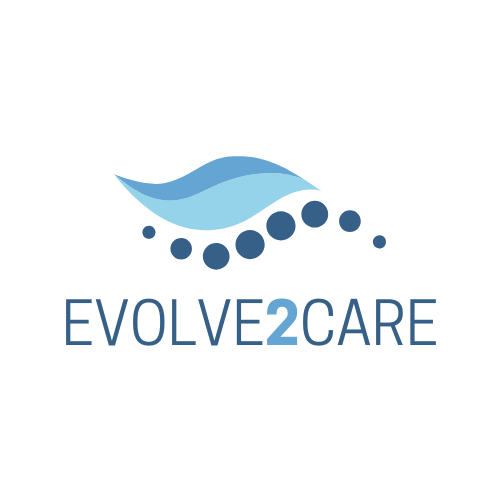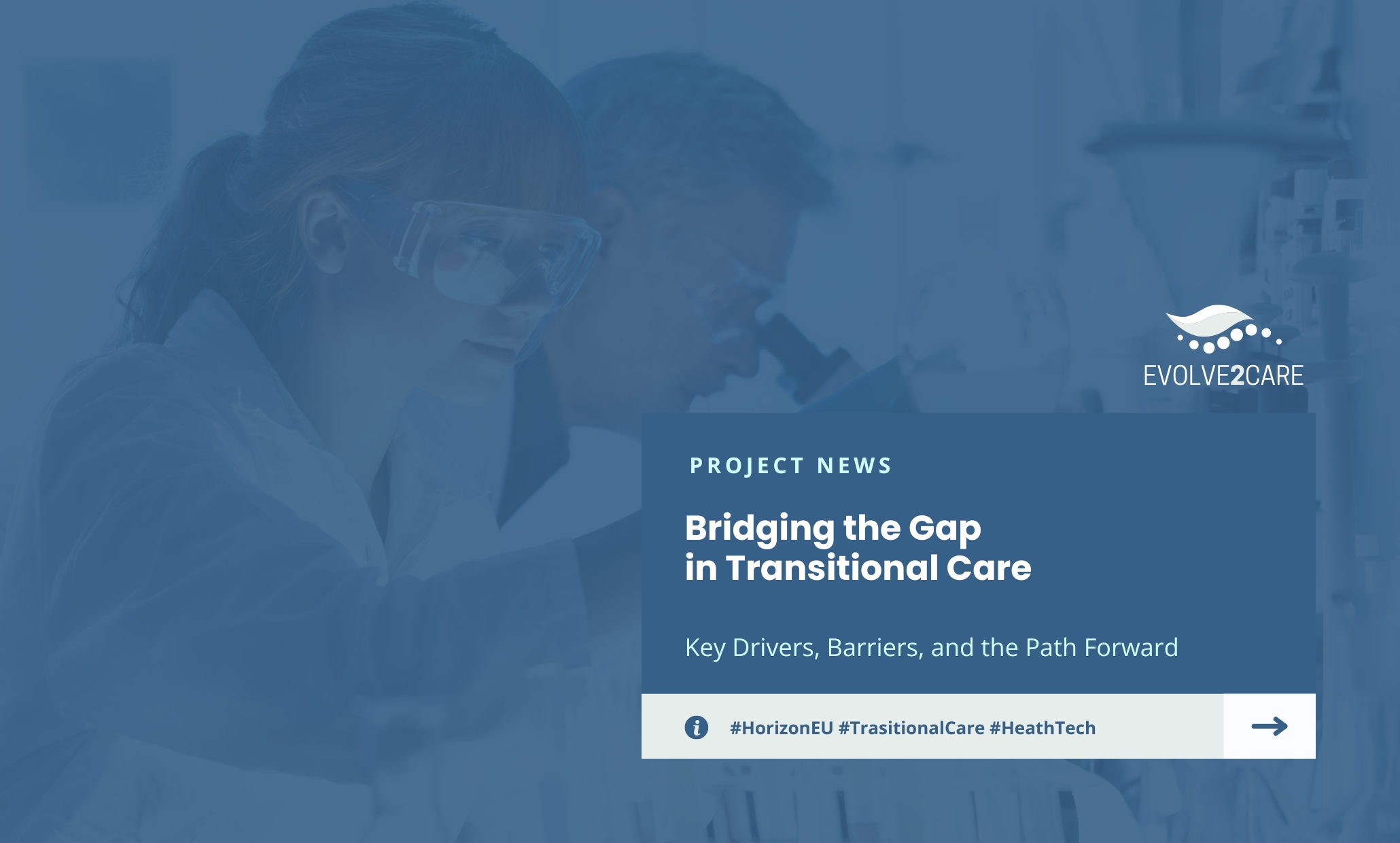Have you ever considered how easy—or challenging—it is to transition from one healthcare setting to another or back home?
For patients with chronic or acute illnesses, this process often involves specialized medical support. Older adults may require advanced care coordination, while young people need tailored support when transitioning from child to adult health services. This process, known as transitional care, relies on seamless coordination and continuity to ensure patients receive the right care at the right time.
Recognizing the importance of well-tempered transitions, the Evolve2Care Project is dedicated to transforming transitional care through innovation, collaboration, and evidence-based strategies. As part of this mission, Deliverable D1.1, titled “Roadmap on Navigating the Complexities of Enabling Innovative Technologies in Transitional Care,” provides a comprehensive framework to help stakeholders —including startups, SMEs corporates, researchers, investors, living labs, hospital administrators, clinicians, healthcare professionals, healthcare providers, policymakers, and tech innovators- address the challenges of integrating HealthTech solutions into transitional care settings. By analyzing literature, surveys, and stakeholder interviews, the general results highlight 3 key drivers, 3 barriers, 3 intersections of drivers and barriers and 3 opportunities that shape the future of transitional care innovation.
What’s driving change in transitional care?
Three major themes consistently emerge as driving forces behind innovation:
- Regulatory Support & Flexibility: Clear policies and adaptable regulations help new technologies scale faster, particularly in areas like home care and AI-driven tools.
- Technological Advancements: From AI to wearable health monitors, cutting-edge tech is making transitional care more efficient and accessible.
- Collaboration and Stakeholder Engagement: Innovation doesn’t happen in isolation. Successful solutions often emerge from partnerships between healthcare providers, patients, researchers, and tech developers.
The Barriers: What’s limiting us?
Even though some challenges are universally acknowledged, different stakeholders perceive them in unique ways.
Here are the three biggest hurdles to slow down innovation:
- Regulatory Challenges: Navigating healthcare regulations is no easy task. Literature reviews highlight the complexity and inconsistency of regulatory frameworks across different regions, making approval processes slow and cumbersome. However, innovators and policymakers face uncertainty, as national policies may not align with innovation.
- Funding and Financial Constraints: Innovators struggle to secure investment and navigate reimbursement systems, while policymakers and accelerators emphasize the need for sustainable financing models and funding structures.
- Technology Integration and Interoperability: New healthcare technologies often don’t “talk” to existing systems identified interoperability as a major challenge.
Where do drivers and barriers intersect?
Understanding how drivers and barriers interact is crucial for pushing innovation forward. Here are some key intersections:
- Regulatory Flexibility vs. Safety Concerns: While flexible regulations foster innovation, they must also ensure safety, particularly for AI and medical devices.
- Technological Advancements vs. Infrastructure Limitations: While digital health tools are evolving rapidly, healthcare infrastructure often lags behind. This is especially true in underserved areas, where limited access to digital infrastructure can slow the adoption of game-changing technologies.
- Collaboration vs. Resistance to Change: While collaboration is essential, healthcare practitioners can be hesitant to adopt new tools due to the lack of training, trust, and perceived inefficiencies associated with new technologies.
So, how do stakeholders bridge these gaps and make transitional care innovation a reality?
- Holistic Support Systems: Apart from including financial and regulatory backing, healthcare providers and patients need hands-on training and education to effectively use new technologies.
- Tailored Solutions for Different Stakeholders: Developing targeted solutions that address each group’s concerns will help create a more integrated system.
- Sustainability of Innovations: To ensure long-term success, funding strategies must prioritize sustainability. Demonstrating clear benefits in terms of patient outcomes and cost savings will encourage wider adoption and continued investment.
By understanding what’s driving innovation—and what’s holding it back— stakeholders can create a more connected, efficient, and patient-centered transitional care system. The future of healthcare innovation may afford turning challenges into opportunities if we seek for deeper collaborations and thus greater cross-fertilization.


